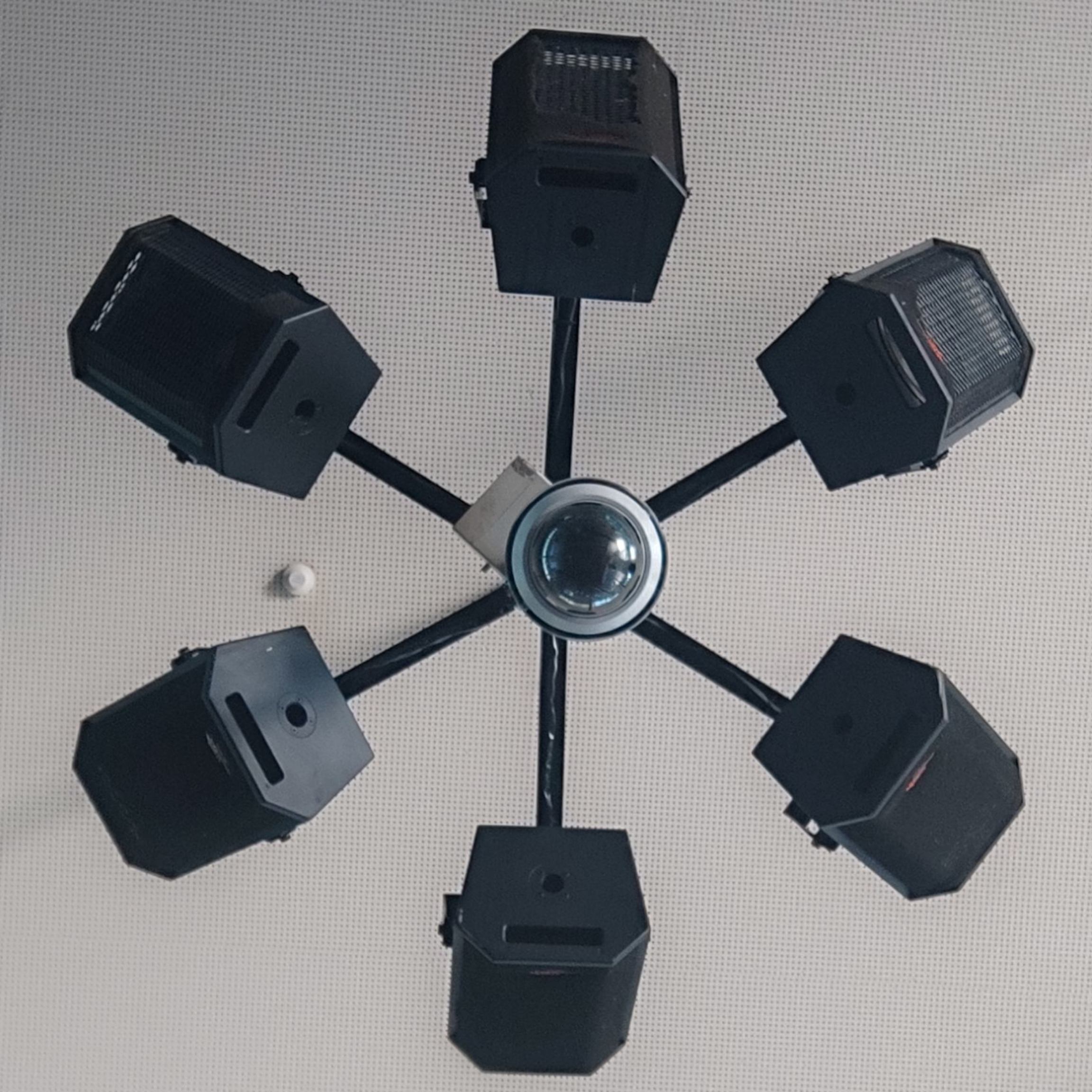Arch is aimed at people who know their shit so they can build their own distro based on how they imagine their distro to be. It is not a good distro for beginners and non power users, no matter how often you try to make your own repository, and how many GUI installers you make for it. There’s a good reason why there is no GUI installer in arch (aside from being able to load it into ram). That being that to use Arch, you need to have a basic understanding of the terminal. It is in no way hard to boot arch and type in archinstall. However, if you don’t even know how to do that, your experience in whatever distro, no matter how arch based it is or not, will only last until you have a dependency error or some utter and total Arch bullshit® happens on your system and you have to run to the forums because you don’t understand how a wiki works.
You want a bleeding edge distro? Use goddamn Opensuse Tumbleweed for all I care, it is on par with arch, and it has none of the arch stuff.
You have this one package that is only available on arch repos? Use goddamn flatpak and stop crying about flatpak being bloated, you probably don’t even know what bloat means if you can’t set up arch. And no, it dosent run worse. Those 0,0001 seconds don’t matter.
You really want arch so you can be cool? Read the goddamn 50 page install guide and set it up, then we’ll talk about those arch forks.
(Also, most arch forks that don’t use arch repos break the aur, so you don’t even have the one thing you want from arch)

Meanwhile random people just using SteamOS and being happy.
SteamOS falls into the category of about 2 arch forks that have a reason to exist.

Don’t know about Cachy but Endeavour is not even a fork. It’s just Arch with a fancy installer.

Didn’t both distros have Btrfs auto snapshots. Same as Garuda. Anything broken? Just a reboot, arrow keys, and rollback.

Android looks at SteamOS from the distance

This post is a little cringe. Endeavor OS is a great Arch Experience for those who want a little preconfiguration and a GUI install. I’ve since moved onto doing it the arch way, but EOS was a great foot in the door and I know for a fact I’m not alone. Ive learned more about Linux in 2 years going from EOS to Arch (and running a proxmox server) than I would have running some “beginner friendly” distro. Really wish folks would stop gatekeeping.

EOS btw.

Any windows power user or dev on a mac can follow a wiki, read a bit and learn.
Good for beginners? I didn’t describe a beginner right here. Anybody with experience in computing will find arch straightforward and satisfying. Heck, a CS student would probably go through a first install process faster than I do after 5 years.
What are the concept involved? Partitioning, networking, booting… These are all familiar fields to tons of very normal computer users.
Arch can be a good first distro to anyone who knows what a computer is doing (or is willing to learn)

Arch was my first distro after going back to Linux. I really liked learning the inner workings of a computer and an OS.
I know plenty of people who just want a plug&play experience with the only input for the install being name, password and date. For them, I would never recommend Arch, simply mint or pop_os would do just fine as the only thing the computer has to do is open up the browser.
I just want more Linux users, not specific distros. In the end if you know your way around Linux, the distro choice doesn’t matter, you just choose a package repo

just because a given person could make it work, doesnt mean they want to. i can personally fix a lot of these issues, but i dont wanna have to bother. i just want to accomplish the inane bullshit i turned my computer on for.
i just think an arch recommendation should always come with that disclaimer. newbies have to know what to expect else they will associate that experience with linux in general.

the wiki could be way better honestly…

Only gets better if we make it better.

that, or having good documentation could be a requirement

“I didnt read the changelogs”
I have never read the changelogs and I have never broken my EOS install ever.
Weak bait.

- Arch users everywhere: You MUST read the Arch news files before updating.
- Also Arch users when updating: Oops, I forgot to read the news file.
- pacman when updating: I have pre install hooks but I don’t print the news files updates by default because that’s probably bloat or something.
Make it make sense

while you do have a point, i’m still having issues with taskwarrior printing it’s update notifications, even after opening an issue and the maintainers patching it.
The thing is, i use arch on 3 different devices, and i don’t need to see every news entry 3 times, so yes in my case having it as default in pacman would indeed be bloat.
That said, there is PLENTY of places where I think arch could have saner defaults. but the beauty of arch is that it is made to be configured exactly the way you like it, so you really can’t fault arch as much in this case, compared to other distros that try to take all decisionmaking away from the user.

You can never be 100% certain the news file didn’t update between the three invocations. If you aren’t refreshing that page between invocations then you aren’t actually using Arch the way it was designed.

well you can never be 100% certain your laptop won’t spontaneously die either.
for any new arch user, i do recommend keeping an archiso live USB around in case something really does happen - since every arch user should know the basics of how it works, it should be easy enough to recover as well.
knowing that, i really only check the news out of curiosity, since i’m not a grub user i haven’t had arch be unbootable since i started using it years ago. even if it did i’m confident enough it’d be a quick fix.

Then I never want to see you telling someone they should’ve checked the news file before updating!

On the contrary, I’d still argue it’s a good distro for beginners, but not for newbies. people who are tech-sawy and not hesitant to learn new things.
I jumped straight into EndeavorOS when I switched to Linux, since arch was praised as the distro for developers, for reasons.
Sure, I had some issues to fight with, but it taught me about all the components (and their alternatives) that are involved in a distro.
So, once you have a problem and ask for help, the first questions are sorts of “what DE/WM do you use?.. is it X11 or wayland? are you using alsa or pipewire?”.
Windows refugees (like me) take so many things for granted, that I think this kind of approach really helps in understanding how things work under the hood. And the Arch-wiki is just a godsend for thst matter. And let’s be real, you rarely look into Arch-wiki for distros other than Arch itself, since they mostly work OOTB.

The Arch-wiki was my main reason for switching to arch. When I used an ubuntu based distro I felt like I had to rely on forum posts to figure out anything whereas with arch everything is documented incredibly well

a lot of it applies to other distros though. its a lot of help in a pinch.

True, between arch and gentoo wiki you can hardly find any other information that is worth your while.

I would, however, recommend Arch if you’re a Linux novice looking to learn about Linux in a more accelerated pace.

I would argue Gentoo is better suited for that. It is just compilation that can take a long time.

Linux From Scratch or Slackware too.

Bit of a different beast. Not something I would daily drive though. Slackware perhaps. But gentoo other then the docs being top notch and the learning experience being fairly streamlined. It is also a good distro for daily use.

Gentoo’s my daily driver.

Or Void Linux.

Arch is aimed at people who know their shit so they can build their own distro based on how they imagine their distro to be.
Is Arch only for people who know how to seek help? Maybe. But it absolutely is not a distro template. It’s a distro.

A package manager + some packages in the base system maybe, is basically a distro template. And maybe some kernel tweaks, or a built-in DE/WM. Or opinionated init system maybe.

There are so many more aspects of Arch that you conveniently ignored. The filesystem hierarchy, the special compilation arguments options tweaks and configuration for e.g. dynamic linking, and how Arch has way more packages than just “some packages in the base system”. And no, I don’t mean the AUR. Arch is no less of a distro than any other distro. What is a distro if not a large swathe of packages meticulously tweaked to interop gloriously?

“Conveniently?” I’m not making a case against Arch. I’m literally using an Arch derivative. Just not trying to sit here listing every single customization they ever made. Chill the fuck out.

I just don’t understand how someone can claim that Arch is a “distro template”.

Cause there’s like six other distros based on it. The point is that a package manager especially is a huge part of what differentiates the general experience of using a distro, and how a derivative distro works. And sure, lots of other details. Something like Manjaro, Artix etc. is basically cut from Arch as a template, often incorporating upstream changes or packages, with downstream changes based on differences of opinion.

Ubuntu has over 100 forks. Is Ubuntu a distro template? Something being forkable merely means that it is libre software.

I don’t think this is a well-defined term, so not much point in arguing about its definition.

To me, every distro that seriously requires you to read through all changelogs before updating is BS, and it doesn’t solve a basic problem. No one in their sane mind will do this, and the system will break.
That’s why, while I respect the upstream Arch, I’d say you should be insane for running it and trying to make things stable, and mocking people for not reading the changelogs is missing the point entirely. Even the best of us failed.
Arch is entirely about “move fast and break stuff”.

Is there anyone here remember Gentoo and the merge/split
/usrperiod?Gentoo developers are kind and super helpful that they put out any important notice after you pull upgrades to your system. Run
eselect news readto know what the breaking change is going to be, and carefully perform the required actions one by one. It’s a great distro made by great fellas.I don’t mind there is breaking change at all. I do mind that you don’t tell me about it.

Yeah, Gentoo puts serious emphasis on that, I have to give them a credit. I liked it.
But yeah, I’d rather not have breaking changes in the first place.

It is not as overwhelming as you make it sounds, you don’t need to read the whole changelog every time you update just check Arch news page and they state any manual action an update might need. I run arch since like 1 y and I almost never had to do such manual actions. You can see on archlinux.org news it’s not that bad although I can totally see why it is not suitable for most people

people who unironically recommend anything arch-based (haha yes steamos is based on arch, yes you’re very very clever, i’m sure you can even figure out why it’s an obvious exception if you think about it for a minute) are just detached from reality and simply want to be part of a group.
The only time arch is suitable for beginners is installing it in a VM to learn linux via brute force, after you’ve gotten used to going through that process you’ll have a very solid base of knowledge for using a more suitable distro.

I started with mint more than 10 years ago because a friend of mine told me it was one, if not the best, distro for newbies (that was a fucking lie). Idk how mint is doing today but back then was kind of a mess and dealing with it wasnt easy, so i dont really know how or why i switched to debian for a while. With debian i had a lot of problems with some software, mostly proprietary drivers for esotic hardware i was running back then due to me buying the cheapest laptops available, so i started distro hopping for a while. Every distro but fedora was debian based so it felt a lot like a more of the same experience and I felt stuck in a loop where i was eventually gonna reinstall my whole system after breaking something i didnt even know existed.
Then one day i found arch. Installing it wasnt as easy as clicking install on the live system’s guy, but just by following the wiki general instructions i didnt have any issues the first time. It felt good. Building the system block by block helped me understand how things work, the package manager was the best i had seen and the newbie corner basically had the solutions for all my screw-ups, even more than ask-ubuntu did. Everybody in the community was super helpful (even some of the devs). Then there was the AUR, with almost every piece of esotic or proprietary software i needed, much easier than adding some random guy’s repositories to apt or enabling backports on debian. Also i found out that i prefer having a rolling release. With arch i learned how to use and maintain my system, and i just stuck with it.
That said, just how some use linux just to brag about it with their normie friends, many many people use arch to brag about it with other linux users (like my friend did), mostly beacause arch has the infamous reputation that it is hard to install, hard to maintain, easy to break. Which is actually not that bad considering that all these people are gonna end up posting in the newbie corner lol.
Truth is that arch is not harder than any other distro. It only comes down to your will to learn and RTFM What i think worked for me was the transparency. Nobody said it was as easy to use as windows, but nobody in the wiki said “dont do this unless you are an experienced user”. Arch is not another fork of ubuntu pretending to be “even more user friendly”, it’s just arch.
I think the problem is about distros like antergos (rip), manjaro, garuda, endevour trying to oversimplify something that only needs you to RTFM only ending up breaking something they tried to automate and hide behind a curtain that wasnt meant to be automated and was meant to be learned to manage, by hand
EDIT: spelling. I’m a non-english speaker, if you find any more errors just tell me and i will correct them (or clarify something better)

I think mint is crazy better these days compared to 10 years ago, and it probably just came down to “we want to be user friendly to those who need their hands held” crashing into “actual users who need their hand held are trying it out.” 10 years ago, I think there simply wasn’t enough interested in Linux outside of Linux circles to properly test and figure things out, not to mention the strides the software itself has made in supporting more hardware more seamlessly.
The thing about RTFM is that users don’t, and the users that stuff like Mint is geared towards is those who when asked to read a wiki page, will simply give up. Windows has a cottage industry of people who do various things to make it easier for that kind of user. For example, just installing Windows on a device for you (albeit with bloatware usually) complete with all the drivers for your hardware. For most of the hardware on a laptop (audio, internet, HIDs, USB), that’ll have you set for life without having to touch anything and for the graphics that’ll at least have you set for several years without having to touch anything. And it’s not like Linux doesn’t have this level of support, it’s just that Windows has this level of support for consumers and Linux typically has it relegated to the enterprise sphere.
That being said, it’s insane how easy it is now to just install Mint, or PopOS, or even Ubuntu and have a working system. But most users don’t even install their Windows, much less a completely foreign OS.

For what it’s worth, I have switched three machines of mine from Win10 to Mint in the last year, and in each case it was much easier and faster to install than Windows. And of course, daily use is much faster and smoother than Windows, but that is true of all distros. It’s just worth mentioning because mint is made to be the full featured user friendly experience (some might even call it bloated) out of the box, yet it’s still a rocket in comparison.
One was a typical work-issued Dell laptop w/ port replicator + M365, one was an old PC at home I built several years ago, and the last was an even older PC I built like 14 years ago.
Just yesterday at work I installed Win10 in VirtualBox so I could test a Windows app that gets built alongside our main embedded Linux software (used the VM since a certain popup window secondary to the main app wasn’t immediately working in Wine). Holy crap was it painful after being used to the Mint installer.
Then when I got home I decided to turn on that 14 year old system that’s been off for a month (when I installed the latest point release 22.1) to let it update. Even using the GUI updater, and even though it had to update the updater itself before updating however many dozen packages AND the kernel, I timed the entire process at five minutes flat. On the computer from 2011, with a pretty old & small SATA SSD system drive. And you can use the PC like normal until it’s done, when it shows a banner suggesting you reboot when you can because of the kernel update.
Again, nothing special in the Linux world where software is actually created with users put first. But still noteworthy for being the “easy” distro that looks a lot like Windows when you first boot it up.
I’m not posting this to say anything negative about Arch, either. That kind of distro is very important to begin with, and Arch in particular seems it’s good enough that it might be the new Debian. Especially with SteamOS switching to it.

I watched a 9 year old install a fully working version of Arch with no GUI…
I think you’re just making it harder than it has to be… lol
EDIT: Or maybe she’s 10? Not sure. But either 9 or 10.

Installing is just following directions. It’s maintaining it after you Frankenstein the hell out of it that most new users struggle with

That’s why you shouldn’t Frankenstein it

Now this I can agree with.

The point of Arch is not that it’s hard to install the point is that it’s modular and you can choose exactly what you need. So in order ton maintain it you may need to know about pipewire, bluez, Wayland, synaptic, tlp, …
Once you know the name of most modules and graphical application it’s indeed pretty easy because Arch’s wiki is great. But I don’t think it’s a great way to discover the ecosystem and you would probably not benefit from Arch specificities compared to another distro.
I think the only person I would recomand this to would be a computer scientist who needs to learn as much as possible about Linux in two months.

Uff, great, so I still have 3 to 4 years to teach it to my son
Thanks for that age recommendation 🫡
Was feared he’s already behind

IMO learning the basics of computing, go for as early as possible. Especially with this new generation of kids.
2 months ago she didn’t even know how to use a mouse properly, and now she’s a whiz. The funniest is when you try to show her something on the screen and she tries to click it like it’s a touch-screen and I have to be like “no, use the mouse!”
It’s a struggle to get started, but once they have that foundational knowledge they pick things up so quickly.

😆 yea, I showed and let him play Rubiks Games (abandoned ware that I played in school (yea, fun teacher) in ~2006) that I got to run via proton and it was exactly the same! As soon as I point on something to tell him about it, his reflexes kick in and I have a new fingerprint on my 4k, lol

What the fuck are you on about? Jesus christ, we get ragebait in here too now?
Know your usecases. Thats it. Linux isn’t hard if you do.
But no, let me recommend the jet engine service manual to my 6 year old that is learning to read. You’re going to have a bad time.
For the record, since this post and most comments irked me, arch is fine. I’m using arch on my workstation/personal rig for years. Fedora on the laptop because I need a stable work thing. Alpine VMs on the homelab because it needs light and stable.
USECASES!

Exercise is fascism

why are you making shit up tho, whos install bricked, mine has no issues, neither does any other linux newbie ive talked to, it has an easy to use gui to setup and then it just works?

My main issue with linux rnow is davinci, and houdini, davinci is easy to pirate, but no redgiant, etc. The effects I use can be remade following tuts or with other addons, symbol bitmapping, and pixeldither. But houdini specifically is just so expensive for hobby use, im addicted tho. I will never make money off that shit if I magically do ill spend 2.5k on the perpetual license. Cant find anyway to pirate an up to date version.
I thought piracy would be easier on linux but it seems to be much harder to find resources if they even exist. Nice for foss stuff tho.

Your main issue with Linux is that it doesn’t help you pirate proprietary software made for another OS?

Oh no someone’s doing piracy! I don’t know about their addons but DaVinci and Houdini have Linux versions. Seems like a valid complaint to me. Piracy is no worse than paying for proprietary software.

I said its easy to pirate on other os not that they arent available on linux?

They have linux versions?

Thats not a strange issue, shits expensive, ppl pirate, lemmydbzer0 is here for a reason

I’ll tell you, nothing bricks as hard or as irreparably as Windows. I have never had to actually reinstall Linux due to some problem (though it’s a good practice security-wise).

What are people doing that breaks their computers? I have used arch for like 15 years now and nothing ever goes wrong?
The closest would be on my desktop sometimes nvidia drivers are in a state that breaks display reinit on wake from sleep but my thinkpad is always fine.
Seriously who are you weird computer vandals going around and breaking everything all the time? What do you do?

Timeshift has turned my system breaking updates and tinkering into a non-issue. I just set up all my systems with it right off the bat. One snapshot per day, one weekly, and one monthly.
Since doing that, I’ve never had to toss a totally borked install.

I really need to set it up, not because I have issues but because having backups feels so nice.

Recent Python 3.13 update broke the ProtonVPN client

Is the protonVPN package maintained by the arch team? Or did you install it on your own?
If the latter you can’t rely in pacman to know about dependencies you never told it about or took steps to ensure were met.

It’s on the “extra” repo

https://archlinux.org/packages/extra/any/proton-vpn-gtk-app/ doesn’t list a particular version of python in deps.
Seems like the proton team made a mistake /shrug. Not exactly a system breaking though, it’s a third party piece of software not being kept up to date.
just roll back till they maintain it. Normal enough procedure

sometimes nvidia drivers are in a state that breaks display reinit on wake from sleep
Hmm, got a question for you about that. What did that appear as for you? Just a black screen and nothing else if it went to sleep?
I had a recently installed app fuck something in my settings so my display is going to sleep after 10 minutes, and when I wake it up I get a normal appearing lock screen with a login. If I login, the screen goes black and all I can see is the mouse cursor. I think about 1 time in 10 it will have no issues and I get back to whatever I’m doing.

Yeah black screen with mouse cursor is the thing. If I check the logs it’ll complain about errors trying to get display foo. Can switch to a TTY session and kill shit and get display back if I restart X.
nfi why the mouse cursor still works.
